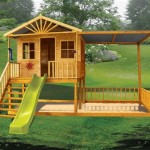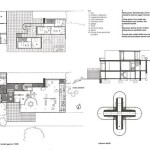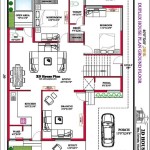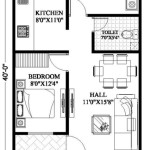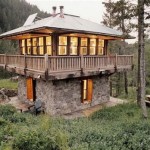East Facing House Plan According To Vastu
Vastu Shastra, an ancient Indian architectural science, provides guidelines for designing buildings in harmony with nature. Its principles aim to create positive energy flow, promoting health, prosperity, and well-being for the occupants. When planning a house, the direction it faces is considered a significant factor. An east-facing house can be particularly auspicious if designed according to Vastu principles. This article will explore the key aspects of designing an east-facing house plan according to Vastu Shastra.
The orientation of a house is crucial because it dictates the amount of sunlight, ventilation, and cosmic energy it receives. East is considered a favorable direction as it welcomes the rising sun, which is associated with new beginnings, vitality, and spiritual growth. However, simply having an east-facing entrance does not guarantee positive results. The layout, proportions, and placement of different rooms and elements within the house must align with Vastu principles to harness the full benefits.
Understanding the specific nuances of Vastu for east-facing homes is critical for creating a balanced and harmonious living space. Careful consideration must be given to the placement of the main entrance, the location of rooms, the slope of the land, and the orientation of open spaces. By adhering to these principles, homeowners can create a house that fosters positive energy, health, and prosperity for the entire family.
Placement of the Main Entrance in an East-Facing House
The main entrance is the most important aspect of Vastu Shastra in any home, and it plays a particularly crucial role in an east-facing house. According to Vastu, the placement of the main entrance determines the type of energy that enters the house. The eastern side is divided into nine equal parts, or padas, and the placement of the main door within these padas significantly impacts the inhabitants.
The ideal location for the main entrance is within the first four padas, moving from the northeast corner towards the east. These padas are considered the most auspicious and are associated with positive energy, prosperity, and health. Avoiding the fifth pada is crucial, as it is considered inauspicious. Entrances in the sixth, seventh, and eighth padas are generally acceptable but less preferable to the first four. The ninth pada, located in the southeast corner, should also be avoided.
It is also important to ensure that the main entrance is larger and more prominent than other doors in the house. This symbolically represents the importance of positive energy entering the home. The door should be made of good quality wood and should open inwards, allowing positive energy to flow into the house. Avoid having any obstructions, such as trees or poles, directly in front of the main entrance. These obstructions can impede the flow of positive energy.
The main entrance should be well-lit and decorated with auspicious symbols, such as Swastika, Om, or images of deities. These symbols help to create a welcoming and positive atmosphere. The area around the main entrance should be kept clean and clutter-free to ensure the smooth flow of energy. A well-maintained and aesthetically pleasing entrance attracts positive energy and sets a positive tone for the entire house.
Optimal Room Placement in an East-Facing House
The placement of different rooms within an east-facing house is another critical aspect of Vastu Shastra. Each room serves a specific function and, therefore, should be located in the direction that best supports its intended purpose. The kitchen, bedrooms, living room, and other spaces should be strategically placed to maximize positive energy flow and create a harmonious living environment.
The kitchen, according to Vastu, is best located in the southeast corner of the house. This is because the southeast is associated with the fire element, which is essential for cooking. The kitchen should be designed so that the person cooking faces east while preparing meals. This aligns with the energy of the rising sun and promotes health and vitality. Avoid placing the kitchen in the northeast corner, as it is considered inauspicious and can lead to financial problems and health issues.
The living room, as a space for relaxation and social interaction, should ideally be located in the north or east direction. These directions are associated with positive energy and promote harmony and communication. The living room should be spacious and well-ventilated, allowing natural light to enter and create a welcoming atmosphere. The furniture arrangement should be such that it encourages social interaction and a sense of community.
Bedrooms should be located in the southwest or west direction of the house. These directions are associated with stability and restfulness, promoting sound sleep and relaxation. The master bedroom should ideally be in the southwest corner, as it is considered the most auspicious location. Avoid placing bedrooms in the northeast corner, as it is considered inauspicious and can lead to health problems and financial instability. The bed should be positioned so that the head points towards the south or west.
The study room, if present, is best located in the northeast corner, as this direction is associated with knowledge and wisdom. This location promotes concentration and focus, making it ideal for studying and learning. The northwest direction can also be suitable for a study room. The room should be well-lit and ventilated, creating a conducive environment for intellectual pursuits.
Bathrooms should ideally be located in the northwest or southeast corner of the house. Avoid placing bathrooms in the northeast corner, as it is considered inauspicious and can lead to health and financial problems. The placement of toilets within the bathroom is also important. They should ideally be placed in the west or south direction.
Open Spaces and Landscaping for East-Facing Homes
The principles of Vastu Shastra extend beyond the interior of the house to include the surrounding open spaces and landscaping. The slope of the land, the placement of gardens, and the direction of water features all play a significant role in creating a harmonious living environment. Proper consideration of these elements can enhance the positive energy flow and overall well-being of the occupants.
Ideally, the land should slope gently from the south and west directions towards the north and east directions. This slope encourages the flow of positive energy towards the house. If the land is uneven, it can be leveled to create a gentle slope. Avoid having a slope that descends from the east or north towards the south or west, as this can lead to negative energy flow.
Open spaces should be predominantly located in the east and north directions. This allows ample sunlight and ventilation to enter the house. Avoid having large structures or obstructions in the east or north directions, as they can block the flow of positive energy. The south and west directions can have higher walls or structures to provide protection from the harsh sun and wind.
Gardens and landscaping can further enhance the positive energy flow of an east-facing house. The east and north sides of the property are ideal for planting trees and flowers. These areas should be well-maintained and kept free of debris. Avoid planting large trees directly in front of the main entrance, as they can obstruct the flow of positive energy. Consider planting auspicious plants like Tulsi (holy basil) in the northeast corner of the garden.
Water features, such as fountains or ponds, should ideally be located in the northeast direction. This direction is associated with wealth and prosperity, and the presence of water can enhance these qualities. The water should be clean and flowing, symbolizing the continuous flow of positive energy. Avoid placing water features in the south or west directions, as it is considered inauspicious.
The boundary walls of the property should be built according to Vastu principles. The south and west walls should be thicker and higher than the east and north walls. This provides protection from negative influences and ensures the security of the property. The boundary walls should be well-maintained and free of cracks or damage.
Maintaining a clean and clutter-free environment is essential for ensuring the smooth flow of positive energy. Regularly decluttering the house and the surrounding open spaces helps to remove stagnant energy and create a more harmonious living environment. A well-maintained and aesthetically pleasing property attracts positive energy and promotes the well-being of the occupants.

Pin On How To Plan

Image Result For Vastu House Plans East Facing 3 Bed Room Small New
26 X 33 East Facing 4bhk House Plan According To Vastu

East Facing House Plan Vastu For

East Facing House Vastu Plan Tips And Things To Avoid

East Facing House Vastu Plan Unlock Prosperity And Positivity
25 X 40 East Facing 3bhk House Plan According To Vastu

27 Best East Facing House Plans As Per Vastu Shastra Civilengi N Three Bedroom Plan

15 Best East Facing House Plans According To Vastu Shastra

Vastu Model Floor Plan For East Direction

